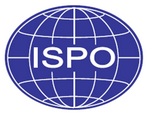Partners
Since its foundation in June 1981 TATCOT has been co-operating with a number of partners and has been recognized by international organisations. These include:
- GTZ (Gesellschaft f�r technische Zusammenarbeit)
- ISPO (International Society for Prosthetics and Orthotics)
- WHO (World Health Organisation)
- InWent (Internationale Weiterbildung und Entwicklung) Germany)
- ISB (International Society of Biomechanics)
- Leahy War Victim Fund of USAID
- Motivation (UK based charity)
- MoveAbility (ICRC)
TATCOT and the GTZ (German Technical Co-operation Agency) since January 2011 giz
On the 23rd February 1981 an agreement was signed between The Federal Republic of Germany and the Government of Tanzania for the establishment of the Tanzania Training Centre for Orthopaedic Technology (TATCOT) in Kilimanjaro Medical Centre (KCMC), Moshi. The former was to grant financial assistance to be used for the construction of a school and the establishment of a training programme for orthopaedic technologists from English speaking countries in Africa and the surrounding region. The German input to the development of TATCOT was through the former Gesellschaft fuer Technische Zusammenarbeit (GTZ), now Gesellschaft fuer Internationale Zusammenarbeit (giz) , the German Technical Co-operation Agency, and the Tanzanian input was through the Tanzanian Ministry of Health.
Gesellschaft fuer Technische Zusammenarbeit (GTZ), now Gesellschaft fuer Internationale Zusammenarbeit (giz) , the German Technical Co-operation Agency, and the Tanzanian input was through the Tanzanian Ministry of Health.
In January 1981 the training in Germany of the Tanzanians who were to become the future teachers of TATCOT commenced. This was followed in August 1981 by the arrival at TATCOT of the first two GTZ experts; these were followed by a series of further experts over the years.
The major educational thrust during this early period was the development of the three year Diploma in Orthopaedic Technology which is certificated by the University of Dar es Salaam. In order to achieve this, considerable resources and efforts were put into the development of the human resources necessary to ensure the sustainability of the course and the development of TATCOT.
During this collaboration the first buildings of TATCOT were erected. These included a building, now known as the Kibo Wing, which housed offices, classrooms, workshops, library and stores. A students' hostel, staff houses and a workshop for local component production were also built.
The Principal of the School during this development stage was Mr Sepp Heim, an Orthopädie Meister and GTZ expert. In 1986 he was succeeded by a Tanzanian, Mr Harold G Shangali. The government of Germany ended its major collaboration with TATCOT in 1990 although it continued its substantial involvement in providing support staff and supporting projects until the present day.
The success of the Diploma Course in Orthopaedic Technology offered by TATCOT is well known internationally. Graduates of the course are influential in many African and other countries and they, in turn, had a great influence in developing prosthetics and orthotics services in these countries.
TATCOT and the International Society for Prosthetics and Orthotics (ISPO)
 In 1985 ISPO recognized TATCOT for training Orthopaedic
Technologists (ISPO Category-II) through the Diploma Course in
Orthopaedic Technology and has continued with its recognition through
regular periodic inspections.
In 1985 ISPO recognized TATCOT for training Orthopaedic
Technologists (ISPO Category-II) through the Diploma Course in
Orthopaedic Technology and has continued with its recognition through
regular periodic inspections.In 1994 TATCOT was recognized by ISPO for training Lower Limb Orthotics Technologists (ISPO Category-II LLO) through the Certificate Course in Lower Limb Orthotics Technology and has continued with its recognition through regular periodic inspections.
In 1995 TATCOT was recognized by ISPO for training Lower Limb Prosthetics Technologists (ISPO Category-II LLP) through the Certificate Course in Lower Limb Prosthetics Technology and has continued with its recognition through regular periodic inspections.
In 2005 TATCOT was recognized by ISPO for training certificate level Wheelchair Technologists (ISPO Category-II). This recognition has been granted in retrospect for the years 2000/01 to 2003/04.
In 2006 TATCOT was recognized by ISPO for training Prosthetists/Orthotists (ISPO Category-I) through the BSc Degree Course in Prosthetics and Orthotics of KCM-College, Tumaini University.
TATCOT and the World Health Organization (WHO)

TATCOT was re-designated as a World Health Organisation (WHO) Collaborating Centre for Orthopaedics and Rehabilitation until 2012. Its terms of reference are:
- To improve and standardize training and education for East Africa in Orthopaedic Technology and related rehabilitation of all indicated levels, including upgrading & postgraduate structures.
- To assist in the development, implementation and coordination of short and long-term training and education programmes in the region.
- To assist in the practical implementation of multidisciplinary strategies for linking Prosthetics and Orthotics Services with Primary Health Care (PHC) and Community-Based Rehabilitation (CBR) programmes/ activities.
- To provide applied research and evaluation, as well as the utilization of appropriate Prosthetics and Orthotics Technologies.
- To develop a costing scheme for Orthopaedic and other related rehabilitation devices in Tanzania.
- To develop and implement a protocol for outcome measurement of training.
Download the report WHO Collaborating Centre - Report of TATCOT Activities October 2004 - November 2005 (PDF-document, 4 pages, 37 KB)
TATCOT and InWEnt (Internationale Weiterbildung und Entwicklung)

InWEnt which was formally known as Deutsche Stiftung fur Internationale Entwicklung (DSE) is a non-profit organisation with worldwide operations dedicated to human resource development, advanced training, and dialogue. After the merger in January 2011 called giz. Since the inception of TATCOT in October 1981, InWEnt offered sponsorship support to students aspiring to qualify as Orthopaedic Technologists; development of both academic and administrative staff and contributions to the overall development of the centre. As from January 2007, InWEnt supported the centre in the entire process of structuring, development and establishing a Distant Learning Course on Spinal Orthotics. Two intakes of a total number of 31 students qualified from the course with the anticipated knowledge and skills in spinal pathologies requiring orthoses. A third course actually takes place at TATCOT and 10 participants will complete it in January 2011.
TATCOT and the ISB (International Society of Biomechanics)

The International Society of Biomechanics promotes the study of the biomechanics of movement with special emphasis on human beings; encouraging international contacts among scientists in this field, promoting knowledge of biomechanics on an international level, and cooperating with related organizations.
ISB has supported TATCOT with Gait Laboratory Equipment which includes AMTI Force Platform, a set of Vicon Cameras and computer hardware including its installation and training of local staff. This has been excellent equipment of which students and staff can appreciate practically the effect of both internal and external forces and the position of the different body segment in space. It does also provide the opportunity to carry out scientific research of persons with neuro-muscular skeletal deficiencies who are either fitted with or without assistive devices.
Furthermore the ISB awarded a competitive grant to first TATCOT student (Nyavo Yawo) to visit a gait lab in Singapore (2007). The ISB has also continued to support the best student's at Tumaini University in Biomechanics by donating US $ 150.00 each year
TATCOT and the Leahy War Victim Fund of USAID

Through the efforts of Senator Patrick Leahy and others, the War Victim Fund was created in 1989 to provide prosthetics to amputees in developing countries. The USAID's War Victim Fund contributes to improving mobility, health and social integration of civilians who have sustained physical disabilities as a direct or indirect result of war, civil strife, or natural disaster.
The Leahy War Victim Fund of USAID has from mid-1990s supported sponsorships for students from different countries in Africa to attend certificate, diploma and degree courses in different specialities within the field of rehabilitation medicine. A total number of fifty-five (55) candidates have qualified to-date in different disciplines.
TATCOT and Motivation

Motivation is a UK based charity founded in 1991 whose Mission Statement is: "To initiate self-sustaining projects to enhance the quality of life of wheelchair users".
Motivation forms partnerships with local organisations to introduce the key elements of rehabilitation for disabled people. Among other areas of commitment, it is involved in creation of sustainable production and distribution of low-cost wheelchairs, education in disability healthcare and encouraging social independence and sustainable livelihoods.
The provision of an appropriately made wheelchair that suits the local conditions will facilitate a change in life of a poor or disadvantaged person with a disability. Such a device will enable an individual to gain independence, confidence and dignity. It is estimated that over 20 million people around the world who would benefit from the use of wheelchair do not have one. Many of these wheelchairs are either donated from overseas or, when locally made, they are copies of Western designs and not usually appropriate to the local environment. The main objective of this programme is to qualify individuals who will produce wheelchairs using locally available resources, apply designs which are appropriate to the local conditions, and implement a scheme of long-term sustainability for a wheelchair service in order to meet the needs of disabled people.
TATCOT in partnership with Motivation established the first Certificate Course in Wheelchair Technology in the world in 2000; Motivation providing the specialist knowledge of wheelchair design and manufacture and TATCOT its experience in technical and clinical education.
The building that houses the course was funded by a grant and support from the European Union, British High Commission, the Tanzanian Ministry of Health and the Good Samaritan's Foundation.
The course is now entirely run by TATCOT while Motivation provides some technical support as well as student sponsorship to the Certificate Course in Wheelchair Technology.
TATCOT and MoveAbility

MoveAbility Moving the abilities for a more inclusive world: MoveAbility, the former Special Fund for the Disabled (SFD), is a Swiss non-profit development organization with over 30 years of experience with the mission to strengthens national capacity in less-resourced countries to remove barriers faced by persons with physical disabilities, by fostering sustainable, accessible and quality physical rehabilitation services and promoting inclusion.

 SHORT COURSE 2023/24
SHORT COURSE 2023/24